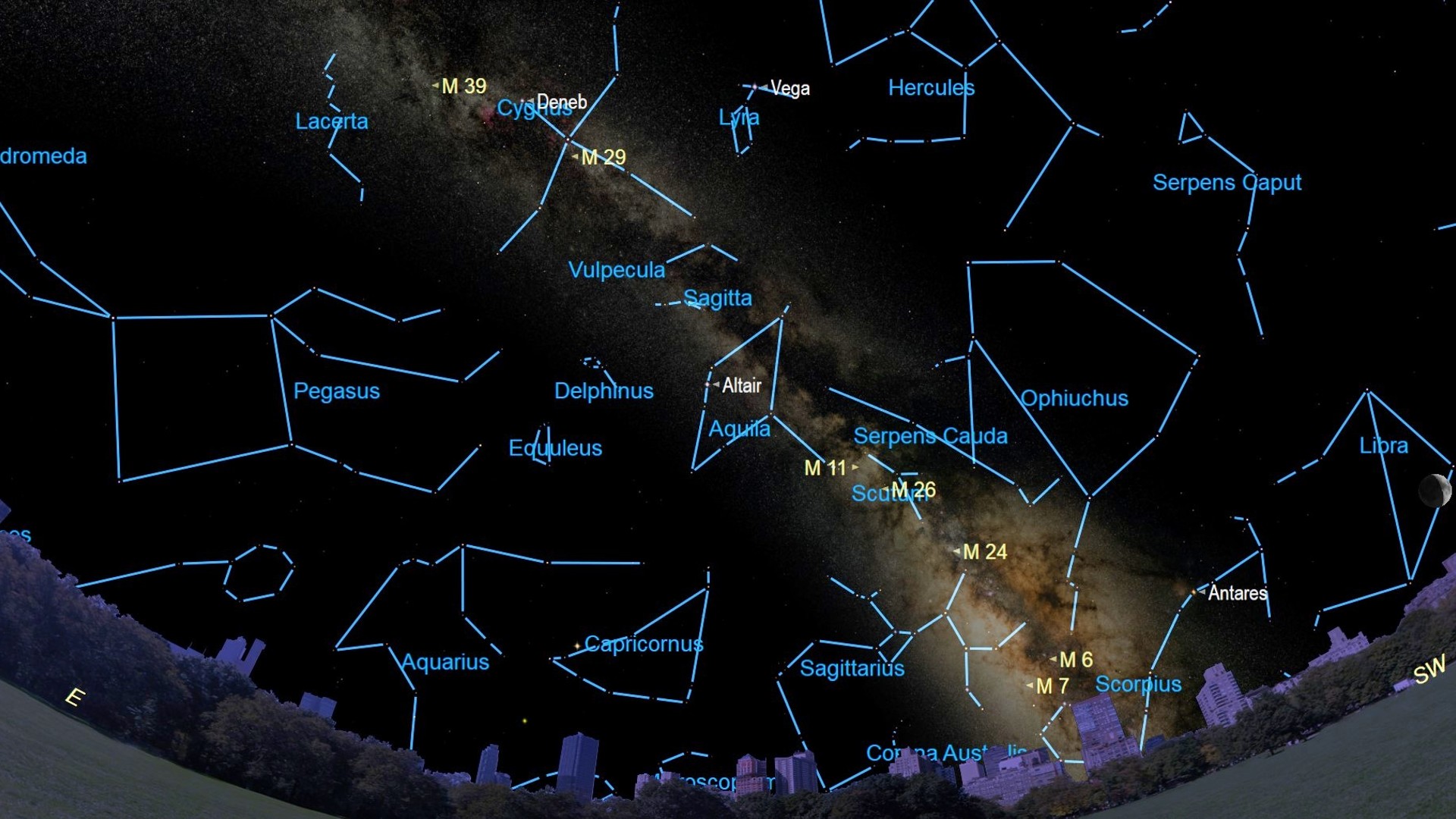See Milky Way star clusters shine in Thursday night's sky
The conditions will be ideal for spotting dense groups of stars throughout the night sky.

Our own home galaxy will be the star of the show tonight.
The crescent moon sets early on Thursday (Sept. 1), making the sky extra dark — ideal for viewing clusters of stars throughout the Milky Way galaxy with a backyard telescope.
The Milky Way will be visible in the southern horizon throughout September, along with the countless knots and clusters of stars scattered throughout the galaxy. Many Messier objects will be visible on Thursday (Sept. 1), including Messier 39 and the Cooling Tower Cluster in Cygnus the Swan, the Wild Duck cluster and Messier 26 in the Scutum constellation, the Sagittarius Star Cloud, and Ptolemy's Cluster and the Butterfly Cluster in Scorpius.
Related: Night sky, September 2022: What you can see tonight [maps]
With the exception of the Sagittarius Star Cloud, all of these are open star clusters. The Milky Way is home to over known 1,000 of these clusters, but astronomers have predicted that the number could be exponentially higher, according to the Harvard–Smithsonian Center for Astrophysics. These open clusters are groups of stars that formed at nearly the same time in the same nebulas, the dense clouds of gas, dust, and other matter that give birth to stars when gravity pulls this material together.
Open clusters tend to form irregular shapes and contain anywhere from a few dozen to a few hundred stars. Globular clusters, by contrast, can contain up to hundreds of thousands stars.

Looking for a telescope to see Milky Way star clusters? We recommend the Celestron Astro Fi 102as the top pick in our best beginner's telescope guide.
Astronomers use open clusters to study star evolution, as most stars in these clusters tend to be young, cosmically speaking; most of the open clusters in the Milky Way are younger than 1 billion years old.
Breaking space news, the latest updates on rocket launches, skywatching events and more!
To spot these clusters in Thursday's night sky, first locate them with binoculars, then use a telescope at low magnification to get a closer look.
If you're looking for a telescope or binoculars with which to observe the star clusters of the Milky Way, our guides for the best binoculars deals and the best telescope deals now can help. Our best cameras for astrophotography and best lenses for astrophotography can also help you prepare to capture the next skywatching sight on your own.
Editor's Note: If you snap a photo of star clusters and would like to share it with Space.com's readers, send your photo(s), comments, and your name and location to spacephotos@space.com.
Follow Brett on Twitter at @bretttingley. Follow us on Twitter @Spacedotcom or on Facebook.

Brett is curious about emerging aerospace technologies, alternative launch concepts, military space developments and uncrewed aircraft systems. Brett's work has appeared on Scientific American, The War Zone, Popular Science, the History Channel, Science Discovery and more. Brett has English degrees from Clemson University and the University of North Carolina at Charlotte. In his free time, Brett enjoys skywatching throughout the dark skies of the Appalachian mountains.
